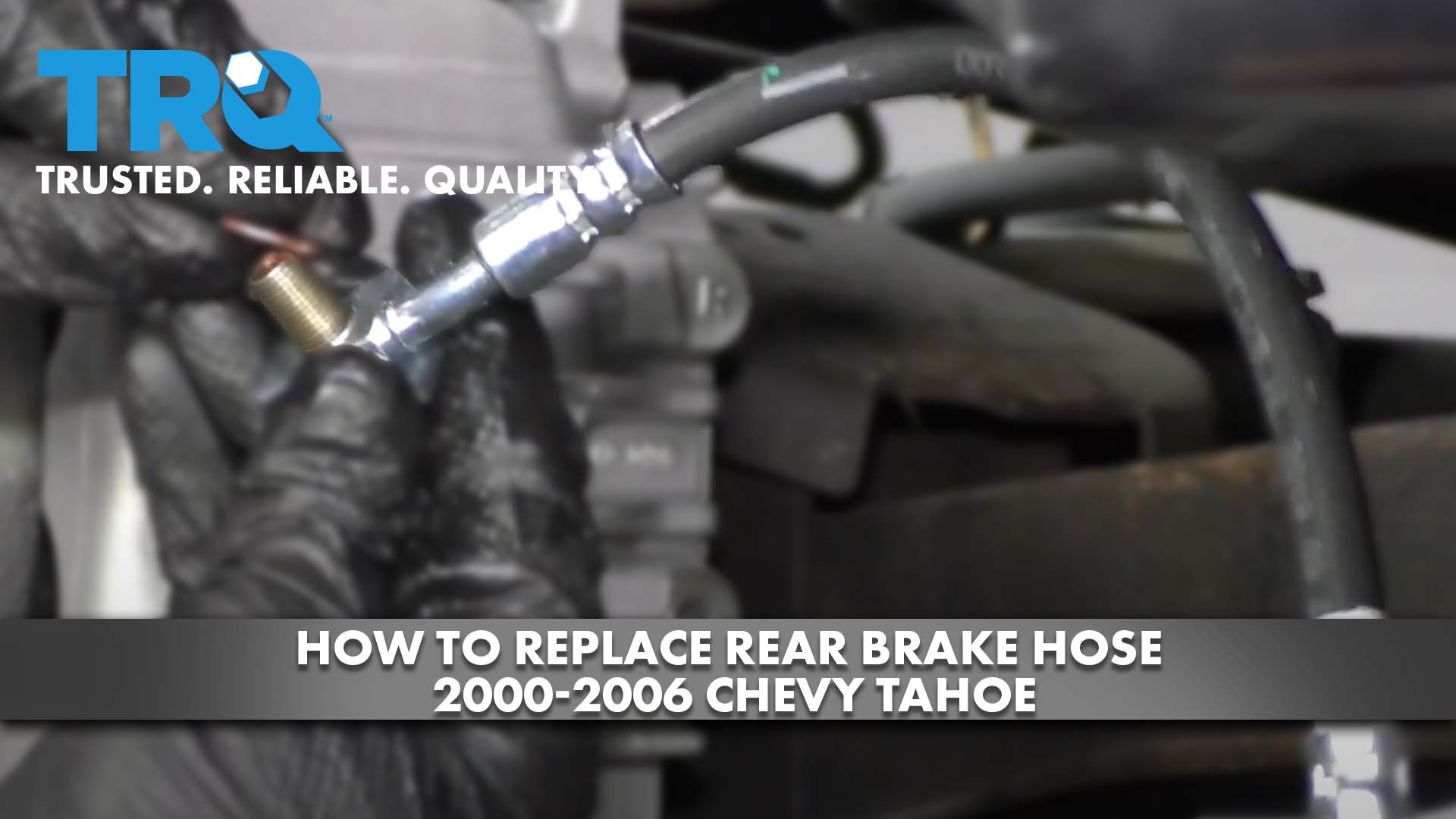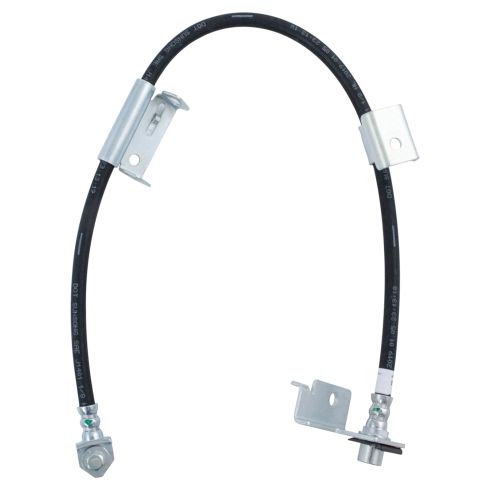
How to Replace Rear Brake Hose 2000-06 Chevy Tahoe
Created on: 2020-11-09
This video shows you how to install a new TRQ brake hose engineered to fit your 2000-2006 Chevy Tahoe.
Tools needed
-
Torque Wrench
Socket Extensions
Jack Stands
10mm Wrench
Brake Parts Cleaner
Flat Blade Screwdriver
Socket Driver
Paper Towels
Wheel Chocks
9/16 Inch Wrench
Drain Pan
Ratchet
Floor Jack
1/2 Inch Impact Gun
22mm Socket
11mm Socket
I'm gonna use a 22-millimeter socket, remove the lug nuts, take the wheel off. Now, remove the wheel. Wanna loosen up this brake line, I'm gonna use a 9/16 line wrench. Just line that up. Just try to break it free. And before I loosen this up too much, then I'm gonna take this clip off right here. Take a right angle pick, just try to get underneath the clip. Just try to slide this up. And then use a straight-blade screwdriver and just try to pry it up some more, and slide that off. And before you pop this off completely, it's a good idea to check your master cylinder reservoir and make sure there's plenty of brake fluid. You don't want to have all the brake fluid come out while you're doing this.
And take that off, slide down line out. And to prevent a lot of the brake fluid from coming out. You can take a little cap and just plug off the end of it, that'll just slow it down. Now we can take the brake hose off the caliper, just use an 11-millimeter socket, and I'll loosen up the bolt. You might want a drain bucket underneath to catch some of the brake fluid. And take the banjo bolt off. And then you wanna take these seals off as well. You don't wanna reuse those. Take that one off there. And take your new hose and some new seals. Put them on the banjo bolt, put one on, and then this goes through the hose and then the other seal goes on the other side. Just like that. Make sure the hose is facing upwards and take a torque wrench and I'm gonna torque this to 30 foot-pounds. Now line the hose up and take that clip. I'm gonna get that clip started. We just give it a little tap. That's good. And then you can take this little cap off the brake line they're lined up and start threading the line on and tighten that down.
Take a 10-millimeter wrench and open up the bleeder screw. Double-check your master reservoir and we're just gonna let this gravity bleed out. Once you get a nice steady stream, you wanna make sure this bleed screw is closed. And then have a partner get in the vehicle and pump the brake pedal. Go ahead pump the brake pedal, there's a little bit of an air gap in between the caliper and the brake pads. And once the pedal starts getting hard, then you know that's filled up. So about five times, pump it up, and then hold it and then while they're holding it, open up this bleed screw.
Little bit of air came out and then close it. All right, pump it again and hold it. While they're holding it, open it again. See if there's any air, maybe a little bit of air came out that time. Then one more time. Pump it up and hold it and open it up one more time. And no air came out that time. So we're good. Snug that up. All right, give it a pump. That was good. All right, put the cap back on. You clean that up with some brake parts cleaner and then double check your fluid level and adjust accordingly.
And it's a good idea to go for a road test and after you're done, come back and take a look and make sure you don't have any leaks and reinstall the tire. Put the lug nuts on, I'm gonna torque these to 140 foot-pounds in a star pattern or across pattern to tighten the wheel down evenly. I'll just go around again, double-check. Then you check the brake fluid level after you're done and adjust accordingly. You wanna make sure you always maintain fluid in the reservoir while you're doing the procedure.
Shop Products
 Chevrolet GMC Front Driver & Passenger Side 4 Piece Brake Caliper Set with Hoses Raybestos RABFS00154
Chevrolet GMC Front Driver & Passenger Side 4 Piece Brake Caliper Set with Hoses Raybestos RABFS00154

How to Replace Rear Brake Hose 2000-06 GMC Yukon
This video shows you how to install a new rear brake hose on your 2000-06 GMC Yukon.






